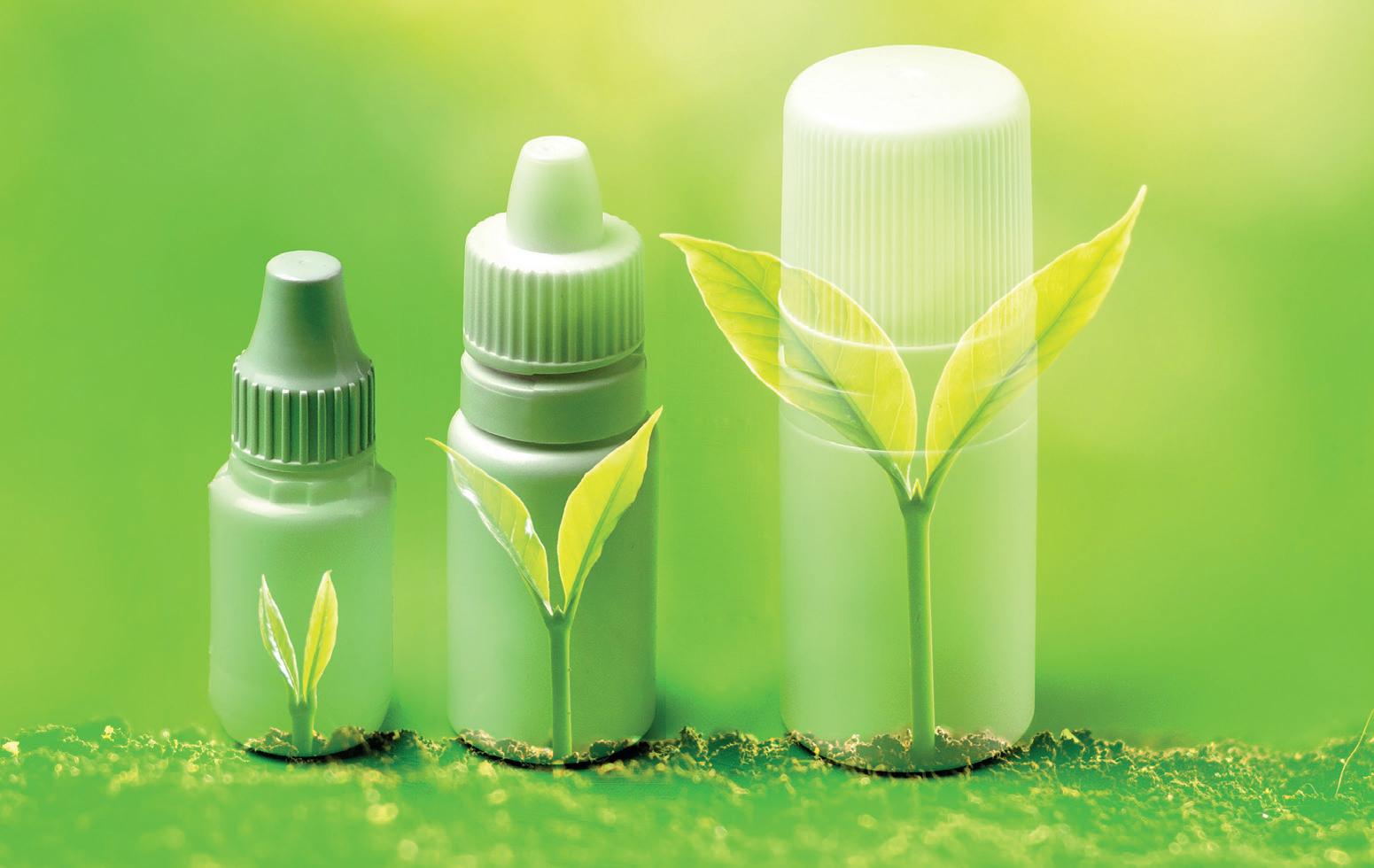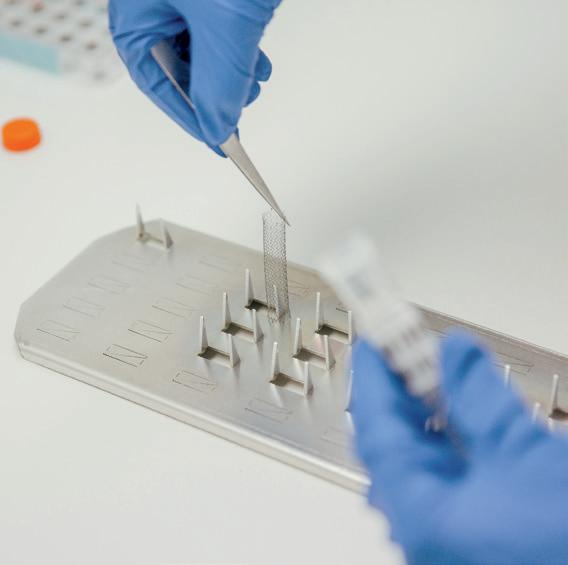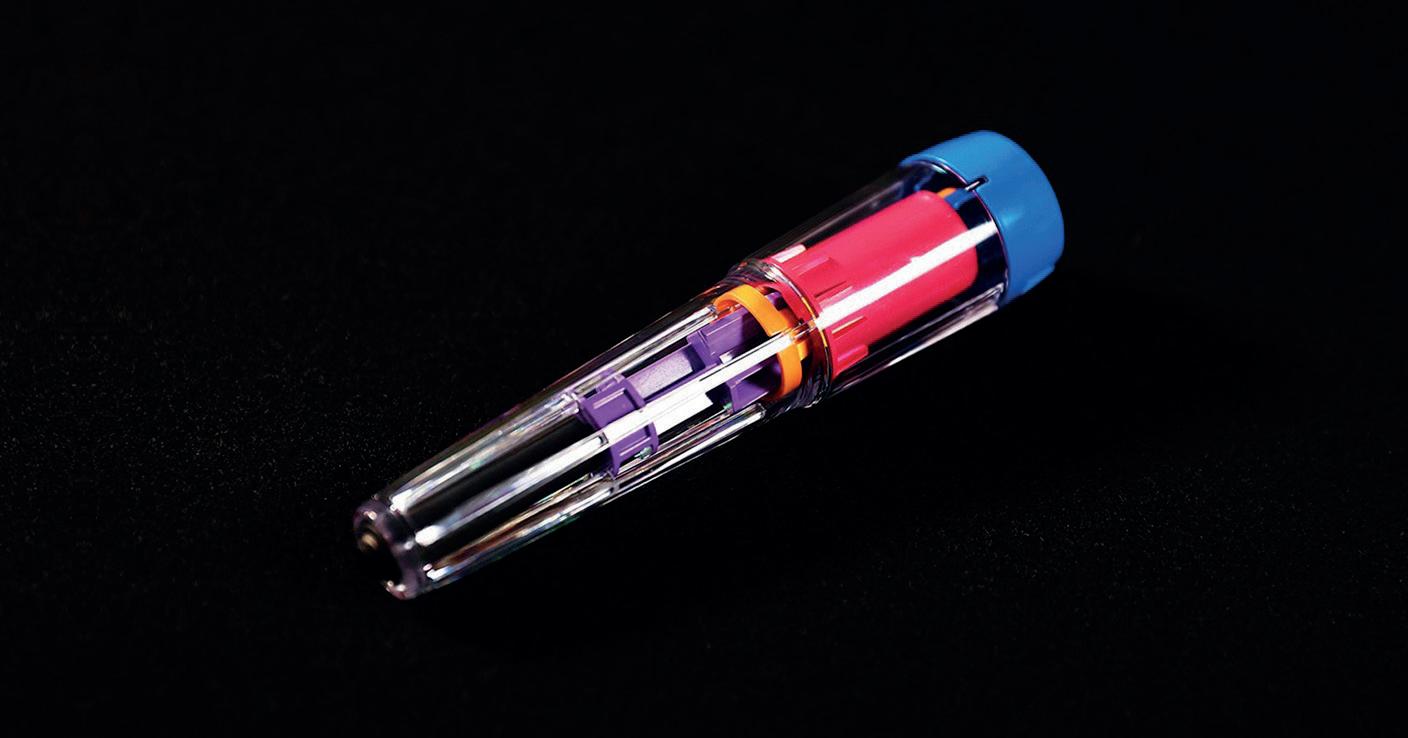
6 minute read
Cover Story
from MPN EU Issue 68
by MPN Magazine


BIOINTERACTIONS, CREATOR OF THE REVOLUTIONARY COATING FOR MEDICAL DEVICES - TRIDANT, SHARES ITS EXPERTISE ON COATINGS, THEIR USES AND THE PREDICTED FUTURE OF ANTIMICROBIALS.
In the past century, modern medicine has broken countless barriers towards a safer, more eff ective healthcare protocol. Arguably, one of the most important discoveries has been antibiotics. Unfortunately, over the last few decades the widespread use of antibiotics has seen the rise of drug resistant bacteria which has led to antibiotics becoming less eff ective over time.
According to the European Centre for Disease Prevention and Control, more than 4 million people acquire a HealthcareAssociated Infection (HCAI) each year, resulting in 37,000 deaths. Combatting HCAIs is a signifi cant problem for the healthcare sector globally. HCAIs are the sixth leading cause of death in western countries. However, treating these infections with antibiotics is lowering the eff ectiveness of the treatments and the public’s trust in medicine. Researchers have been able to pinpoint the cause of most of these infections: bacteria-infested surfaces inside of hospitals. There is an identifi ed need to protect surfaces from germs and microbes by using antimicrobial coatings.
An antimicrobial coating is an application of a chemical agent on a surface that can stop the growth of disease-causing microorganisms. Apart from increasing the surface’s durability, appearance and corrosion resistance for example, these coatings also protect from harmful disease-causing microbes. When medical equipment is coated with an antimicrobial solution, it can prevent up to 99.999% of pathogens, signifi cantly reducing the risk of infection for the patients. Revolutionary antimicrobial coatings stick to the surface they are applied on and remain eff ective for a considerable period of time without reducing effi cacy, defi ning them as one of the best options to fi ght bacteria in a medical environment. CURRENT STATE-OF-THE-ART ANTIMICROBIAL COATINGS AND THEIR USES Everything is susceptible to microbes—surfaces, healthcare devices, equipment, walls, textiles; the list is almost endless. From these surfaces, microbes fi nd their way to humans. Unfortunately, strict hygiene regimes and existing disinfectants have limited effi cacy and require a considerable level of maintenance to reduce the risk of infection for prolonged periods of time. New developments are bringing to light state-of-the-art antimicrobial coatings, such as TridAnt, which off er a new way to combat infections more eff ectively, effi ciently and for longer periods of time. TridAnt is proven to provide monoclonal protection, which kills a broad spectrum of gram-positive and gram-negative bacteria as well as enveloped and non-enveloped viruses, including E.Coli,
THE HOME OF INFECTION PROTECTION
INFECTION PROTECTION

MRSA, Infl uenza, Vaccinae, Adenovirus, Norovirus and SARS-Cov-2. TridAnt is also suitable for skin protection as well as most other surfaces including woven and non-woven fabrics, as well as hard surfaces such as metals (nitinol and stainless steel) and polymers (polycarbonate and polyurethanes).
The new antimicrobial technology is non-leaching and therefore completely safe to use in all environments and even for implants inside the human body including class 3 medical devices. Its active components target microbes (prokaryotic cells) and are non-leaching which provide consistent protection on the device. For the fi rst time, medical device technology is able to kill enveloped and non-enveloped viruses, gram-positive and gram-negative bacteria as well as preventing the formation of biofi lms for long-periods of time of up to 365 days (as well as safe enough to protect skin for up to 48 hours) without any noticeable reduction in effi cacy over time. As a result, antimicrobial-coated medical devices are protected with a highly eff ective and non-leaching shield for a consistent level of protection for the device.
WHAT’S NEEDED TO ADVANCE THE TECHNOLOGY TO MAKE THAT FUTURE A REALITY One of the main factors stunting the widespread use of antimicrobial coatings are the current regulations in place. Under today’s European Union (EU) regulations for example, medical devices are a part of the new Medical Device Regulations and are therefore required to be submitted to regulatory bodies for approval. Regulators want to make sure that any positive eff ects an antimicrobial coating have are risk free, able to be replicated across the board, in diff erent settings and for diff erent patients.
In the USA, the use of antimicrobial coatings is more widespread than in the EU. The US Food and Drug Administration (FDA, which oversees drug and medical device developments) allows the use of chlorhexidine and other coatings, regardless of them leaching and reducing their eff ectivity overtime. In the EU, however, this is seen as a risk to the patient and regulated against.
Thorough testing and aiming for perfection in all medical-adjacent products are especially important not only for patient care, but also to bring about a continued cycle of technology innovation. This current method of testing helps hospitals, patients and doctors to be certain that antimicrobial coatings are eff ective against HCAIs. However, this process can be very long, at times up to years, for technologies ultimately to earn accreditation, which slows down progress. Regulations need to be thorough and eff ective, but they also need to move forward to assist with innovation.
OTHER GROUNDBREAKING PRODUCTS AVAILABLE BioInteractions is not only responsible for creating and developing the revolutionary coating for medical devices - TridAnt, but also the globally used Astute and Assist solutions.
Astute Antithrombogenic Coating is a legacy technology which has been utilised on a variety of class 3 medical devices for its safe and successful use to prevent blood clots on chronic medical devices. The active antithrombogenic components halts the blood clotting cascade mechanism. This is combined with passive non-thrombogenic elements to prevent deposition and adhesion on the device surface. Assist Hydrophilic Coating has delivered a high-performance lubricious surface for high-stress applications without particulate formation or delamination of the coating on devices approved both in the USA and Europe. The coating enhances biocompatibility of the surfaces whilst enabling the surface to signifi cantly decrease the frictional resistance even under stress. This radically reduces tissue damage and improves comfort when delivering or removing devices from the patient.
PROMISING AND POTENTIAL USES IN THE FUTURE The prospect of a biocompatible technology which can enhance the function of medical devices through eliminating existing microbes and also preventing the formation of new colonies consistently over extensive periods of time represents a paradigm shift in prevention and treatment of surgical infections. The future will bring further developments in material sterilisation, bacterial reduction and viral prevention. Antimicrobial coatings will cement themselves as the golden standard of excellence in healthcare, used in all things that go inside the patient and around open wounds. Additionally, they will help prolong the active lifecycle of medical devices, which has a signifi cant economic, health and social care impact.
As time goes on, the focus in the healthcare sector will switch from infection reaction to infection prevention. Once science understands how to prevent infections, we will also be able to prevent pandemics, lockdowns, and raise the public’s confi dence in antibiotics and vaccines.









